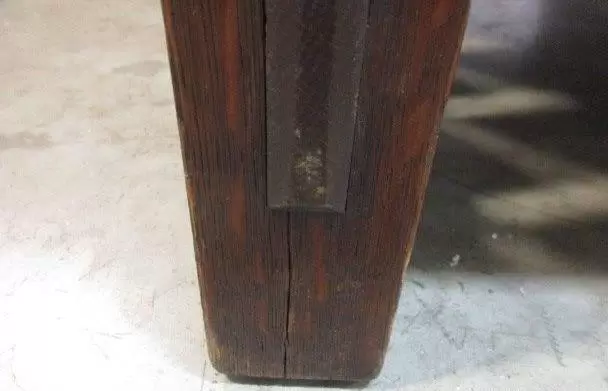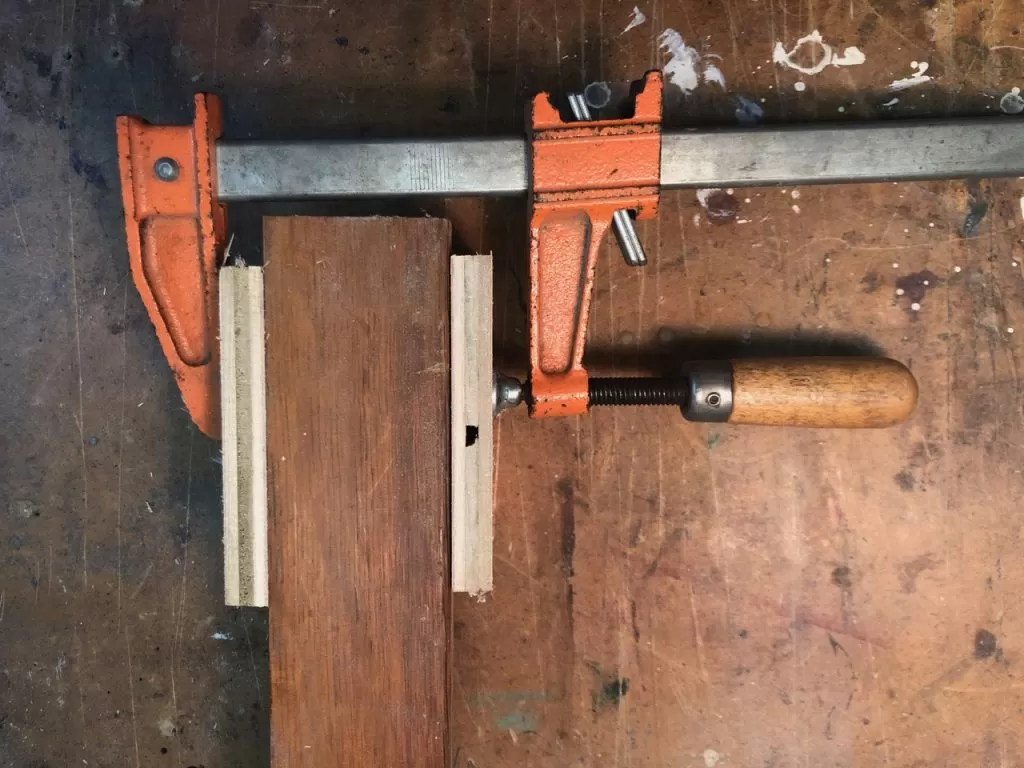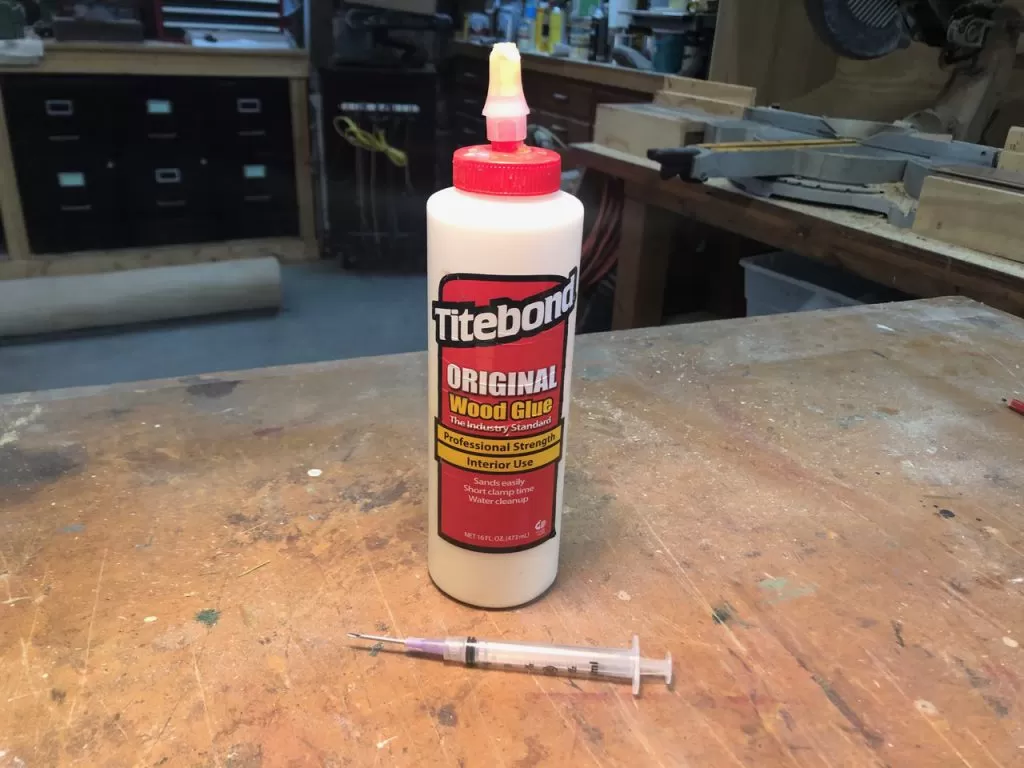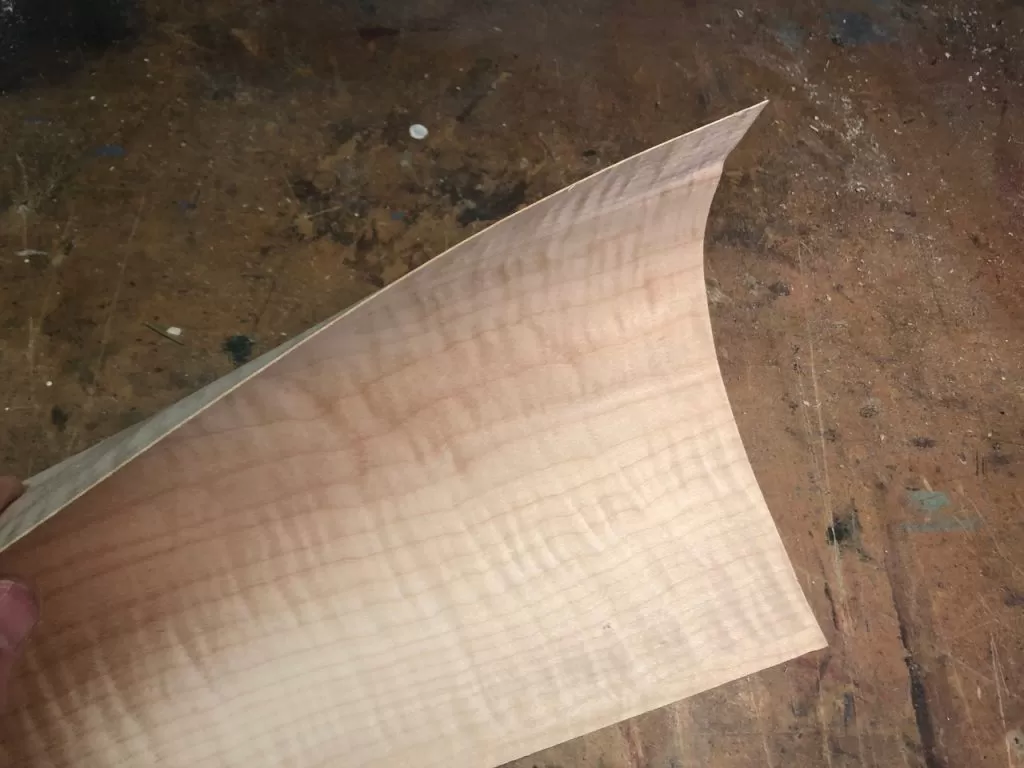How to Fix a Split in a Stickley Morris Chair
by Bruce Johnson
Knowing, perhaps, of my interest in antique furniture restoration, a reader recently wrote with a question inspired by his recent acquisition of an L. & J.G. Stickley Morris chair:
“The chair is, predictably, quite solid and has weathered more than a century admirably, with a few character marks here and there. Below the through-tenons, however, three of the four legs have splits. I’m assuming this is not uncommon. I have an antique sideboard with the same issue and have seen it elsewhere. I’m guessing it is caused by decades of stress and the wood expanding and shrinking over the seasons.”

“The split doesn’t seem to have any structural effect, but, if possible, I would at least like to stabilize the splits. Based on what I know, there are three options: (1.) glue and clamp, (2.) fill with wood epoxy filler, or (3.) do nothing. Which of these options do you recommend?”
You brought out two good points that bear repeating: wood is often under stress and wood is always expanding and shrinking as the temperature and humidity change. While doing nothing might seem the easiest solution, that’s just kicking the can down the road. The split weakens the ability of the leg to withstand stress, such as when someone slides it across the floor rather than lifting it. An intact leg can withstand the stress; two separate halves of that leg might not.
Packing the split with any synthetic filler is also going to lead to a problem in the future. When the wood expands and contracts, as it will, the pressure exerted will break the synthetic filler into unsightly pieces that will then be difficult to dig out.

When gluing the two pieces back together, you first have to make sure they can go back together. Before injecting any glue into the split, place your clamp on the leg, making sure to protect the older wood from the metal jaws with small pieces of softwood or rubber pads, then tighten it slowly. If the two pieces readily go back together, gluing will work. But if they would have to be forced together, that means one or both of them have permanently shrunk. Forcing them together may mean that they will pop back even after being glued or, worse yet, that you will crack one of them under the pressure of your clamp.

Presuming the two pieces can easily be brought together, use a medical syringe and large bore needle to inject a quality woodworking glue deep into the split. If you can’t get a medical syringe and needle, squeeze the glue as far as you can into the split, then spread it internally by pulling a length of dental floss back and forth through it. Clamp overnight to allow the glue to harden and cure. Be sure to wipe off any excess glue with a damp cloth before it hardens.

If the two halves cannot safely be clamped together, then acquire or cut a thin slice of oak veneer that you can slide into the split after you have injected your glue. Allow the veneer to protrude on all sides of the leg before clamping. After the glue has dried, you can remove your clamp and trim off the excess veneer with a hobby knife. A dab of stain to match the surrounding wood should make the thin strip of veneer nearly indistinguishable.
I hope this helps!
– Bruce Johnson
